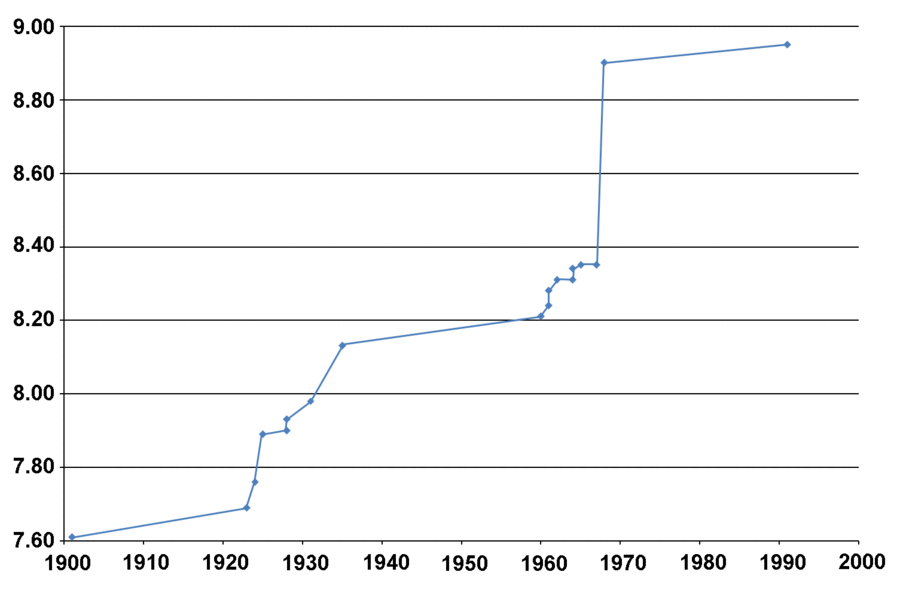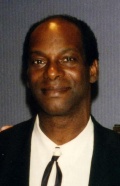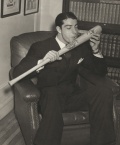Mark Dominus (陶敏修)
mjd@pobox.com

Archive:
| 2025: | JFMAMJ |
| JAS | |
| 2024: | JFMAMJ |
| JASOND | |
| 2023: | JFMAMJ |
| JASOND | |
| 2022: | JFMAMJ |
| JASOND | |
| 2021: | JFMAMJ |
| JASOND | |
| 2020: | JFMAMJ |
| JASOND | |
| 2019: | JFMAMJ |
| JASOND | |
| 2018: | JFMAMJ |
| JASOND | |
| 2017: | JFMAMJ |
| JASOND | |
| 2016: | JFMAMJ |
| JASOND | |
| 2015: | JFMAMJ |
| JASOND | |
| 2014: | JFMAMJ |
| JASOND | |
| 2013: | JFMAMJ |
| JASOND | |
| 2012: | JFMAMJ |
| JASOND | |
| 2011: | JFMAMJ |
| JASOND | |
| 2010: | JFMAMJ |
| JASOND | |
| 2009: | JFMAMJ |
| JASOND | |
| 2008: | JFMAMJ |
| JASOND | |
| 2007: | JFMAMJ |
| JASOND | |
| 2006: | JFMAMJ |
| JASOND | |
| 2005: | OND |
Subtopics:
| Mathematics | 245 |
| Programming | 99 |
| Language | 95 |
| Miscellaneous | 75 |
| Book | 50 |
| Tech | 49 |
| Etymology | 35 |
| Haskell | 33 |
| Oops | 30 |
| Unix | 27 |
| Cosmic Call | 25 |
| Math SE | 25 |
| Law | 22 |
| Physics | 21 |
| Perl | 17 |
| Biology | 16 |
| Brain | 15 |
| Calendar | 15 |
| Food | 15 |
Comments disabled
Sat, 23 Apr 2016
Steph Curry: fluke or breakthrough?
[ Disclaimer: I know very little about basketball. I think there's a good chance this article contains at least one basketball-related howler, but I'm too ignorant to know where it is. ]
Randy Olson recently tweeted a link to a New York Times article about Steph Curry's new 3-point record. Here is Olson’s snapshot of a portion of the Times’ clever and attractive interactive chart:

(Skip this paragraph if you know anything about basketball. The object of the sport is to throw a ball through a “basket” suspended ten feet (3 meters) above the court. Normally a player's team is awarded two points for doing this. But if the player is sufficiently far from the basket—the distance varies but is around 23 feet (7 meters)—three points are awarded instead. Carry on!)
The chart demonstrates that Curry this year has shattered the single-season record for three-point field goals. The previous record, set last year, is 286, also by Curry; the new record is 406. A comment by the authors of the chart says
The record is an outlier that defies most comparisons, but here is one: It is the equivalent of hitting 103 home runs in a Major League Baseball season.
(The current single-season home run record is 73, and !!\frac{406}{286}·73 \approx 103!!.)
I found this remark striking, because I don't think the record is an outlier that defies most comparisons. In fact, it doesn't even defy the comparison they make, to the baseball single-season home run record.
In 1919, the record for home runs in a single season was 29, hit by Babe Ruth. The 1920 record, also by Ruth, was 54. To make the same comparison as the authors of the Times article, that is the equivalent of hitting !!\frac{54}{29}·73 \approx 136!! home runs in a Major League Baseball season.
No, far from being an outlier that defies most comparisons, I think what we're seeing here is something that has happened over and over in sport, a fundamental shift in the way the game is played; in short, a breakthrough. In baseball, Ruth's 1920 season was the end of what is now known as the dead-ball era. The end of the dead-ball era was the caused by the confluence of several trends (shrinking ballparks), rule changes (the spitball), and one-off events (Ray Chapman, the Black Sox). But an important cause was simply that Ruth realized that he could play the game in a better way by hitting a crapload of home runs.
The new record was the end of a sudden and sharp upward trend. Prior to Ruth's 29 home runs in 1919, the record had been 27, a weird fluke set way back in 1887 when the rules were drastically different. Typical single-season home run records in the intervening years were in the 11 to 16 range; the record exceeded 20 in only four of the intervening 25 years.
Ruth's innovation was promptly imitated. In 1920, the #2 hitter hit 19 home runs and the #10 hitter hit 11, typical numbers for the nineteen-teens. By 1929, the #10 hitter hit 31 home runs, which would have been record-setting in 1919. It was a different game.
For another example of a breakthrough, let's consider competitive hot dog eating. Between 1980 and 1990, champion hot-dog eaters consumed between 9 and 16 hot dogs in 10 minutes. In 1991 the time was extended to 12 minutes and Frank Dellarosa set a new record, 21½ hot dogs, which was not too far out of line with previous records, and which was repeatedly approached in the following decade: through 1999 five different champions ate between 19 and 24½ hot dogs in 12 minutes, in every year except 1993.
But in 2000 Takeru Kobayashi (小林 尊) changed the sport forever, eating an unbelievably disgusting 50 hot dogs in 12 minutes. (50. Not a misprint. Fifty. Roman numeral Ⅼ.) To make the Times’ comparison again, that is the equivalent of hitting !!\frac{50}{24\frac12}·73 \approx 149!! home runs in a Major League Baseball season.
At that point it was a different game. Did the record represent a fundamental shift in hot dog gobbling technique? Yes. Kobayashi won all of the next five contests, eating between 44½ and 53¾ each time. By 2005 the second- and third-place finishers were eating 35 or more hot dogs each; had they done this in 1995 they would have demolished the old records. A new generation of champions emerged, following Kobayashi's lead. The current record is 69 hot dogs in 10 minutes. The record-setters of the 1990s would not even be in contention in a modern hot dog eating contest.
It is instructive to compare these breakthroughs with a different sort of astonishing sports record, the bizarre fluke. In 1967, the world record distance for the long jump was 8.35 meters. In 1968, Bob Beamon shattered this record, jumping 8.90 meters. To put this in perspective, consider that in one jump, Beamon advanced the record by 55 cm, the same amount that it had advanced (in 13 stages) between 1925 and 1967.

Progression of the world long jump record
The cliff at 1968 is Bob Beamon
Did Beamon's new record represent a fundamental shift in long jump technique? No: Beamon never again jumped more than 8.22m. Did other jumpers promptly imitate it? No, Beamon's record was approached only a few times in the following quarter-century, and surpassed only once. Beamon had the benefit of high altitude, a tail wind, and fabulous luck.
Another bizarre fluke is Joe DiMaggio's hitting streak: in the 1941 baseball season, DiMaggio achieved hits in 56 consecutive games. For extensive discussion of just how bizarre this is, see The Streak of Streaks by Stephen J. Gould. (“DiMaggio’s streak is the most extraordinary thing that ever happened in American sports.”) Did DiMaggio’s hitting streak represent a fundamental shift in the way the game of baseball was played, toward high-average hitting? Did other players promptly imitate it? No. DiMaggio's streak has never been seriously challenged, and has been approached only a few times. (The modern runner-up is Pete Rose, who hit in 44 consecutive games in 1978.) DiMaggio also had the benefit of fabulous luck.
Is Curry’s new record a fluke or a breakthrough?
I think what we're seeing in basketball is a breakthrough, a shift in the way the game is played analogous to the arrival of baseball’s home run era in the 1920s. Unless the league tinkers with the rules to prevent it, we might expect the next generation of players to regularly lead the league with 300 or 400 three-point shots in a season. Here's why I think so.
Curry's record wasn't unprecedented. He's been setting three-point records for years. (Compare Ruth’s 1920 home run record, foreshadowed in 1919.) He's continuing a trend that he began years ago.
Curry’s record, unlike DiMaggio’s streak, does not appear to depend on fabulous luck. His 402 field goals this year are on 886 attempts, a 45.4% success rate. This is in line with his success rate every year since 2009; last year he had a 44.3% success rate. Curry didn't get lucky this year; he had 40% more field goals because he made almost 40% more attempts. There seems to be no reason to think he couldn't make the same number of attempts next year with equal success, if he wants to.
Does he want to? Probably. Curry’s new three-point strategy seems to be extremely effective. In his previous three seasons he scored 1786, 1873, and 1900 points; this season, he scored 2375, an increase of 475, three-quarters of which is due to his three-point field goals. So we can suppose that he will continue to attempt a large number of three-point shots.
Is this something unique to Curry or is it something that other players might learn to emulate? Curry’s three-point field goal rate is high, but not exceptionally so. He's not the most accurate of all three-point shooters; he holds the 62nd–64th-highest season percentages for three-point success rate. There are at least a few other players in the league who must have seen what Curry did and thought “I could do that”. (Kyle Korver maybe? I'm on very shaky ground; I don't even know how old he is.) Some of those players are going to give it a try, as are some we haven’t seen yet, and there seems to be no reason why some shouldn't succeed.
A number of things could sabotage this analysis. For example, the league might take steps to reduce the number of three-point field goals, specifically in response to Curry’s new record, say by moving the three-point line farther from the basket. But if nothing like that happens, I think it's likely that we'll see basketball enter a new era of higher offense with more three-point shots, and that future sport historians will look back on this season as a watershed.
[ Addendum 20160425: As I feared, my Korver suggestion was ridiculous. Thanks to the folks who explained why. Reason #1: He is 35 years old. ]
[ Addendum 20210627: Blog article about the slowness with which the league adapted to the three-point rule. ]
[Other articles in category /games] permanent link







